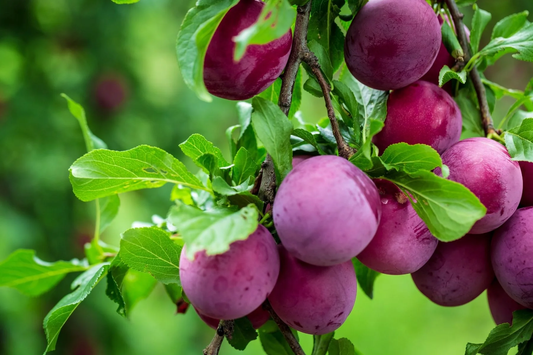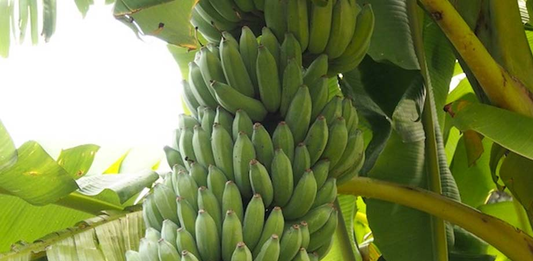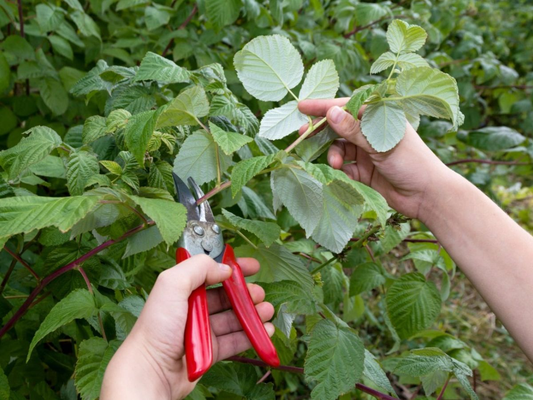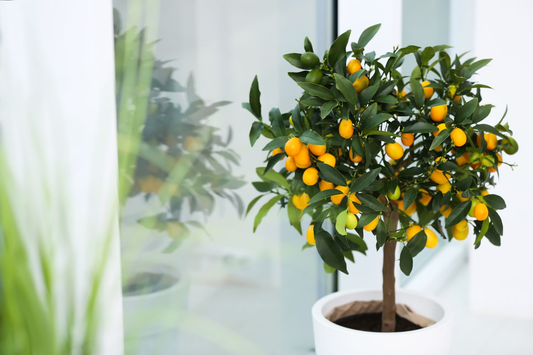Container Gardening Ideas
Share
- 1. Introduction
- 2. Choosing the Right Containers
- 3. Best Soil Mix for Container Gardening
- 4. Plants Suitable for Container Gardening
- 5. Container Gardening for Small Spaces
- 6. Seasonal Container Gardening Ideas
- 7. Maintaining a Container Garden
- 8. Creative Themes for Container Gardens
- 9. Troubleshooting Common Container Gardening Issues
- 10. FAQ – Frequently Asked Questions
1. Introduction
Container gardening is a versatile and modern approach to cultivating plants, offering a practical solution for individuals with limited outdoor space. Whether you’re an urban dweller with a small balcony or someone looking to add greenery to indoor areas, container gardening provides endless possibilities for creativity and efficiency.
Benefits of Container Gardening
-
Flexibility:
- Allows easy relocation of plants to optimize sunlight and shade exposure.
- Enables seasonal planting by moving containers indoors or outdoors as needed.
-
Accessibility:
- Perfect for individuals with mobility challenges as containers can be raised to a convenient height.
- Easy maintenance compared to traditional ground gardening.
-
Space Efficiency:
- Ideal for small spaces like balconies, patios, and rooftops.
- Vertical gardening options maximize limited areas by utilizing walls and shelves.
Why Container Gardening Works for Urban Living
- Perfect for apartments and homes without traditional garden areas.
- Allows urban residents to grow fresh produce, herbs, and flowers in compact spaces.
- Provides a way to bring nature into cityscapes, improving mental well-being and air quality.
Key Advantages at a Glance
| Advantage | Details |
|---|---|
| Portability | Move plants to follow the sun or protect them from harsh weather. |
| Customizability | Containers come in various sizes, shapes, and materials to suit your style and needs. |
| Water Efficiency | Focuses water delivery directly to plant roots, reducing waste. |
| Pest Control | Isolating plants in containers helps minimize pest infestations. |
Container gardening is more than a practical choice—it’s an artistic expression of nature within confined spaces. Whether you’re a beginner or a seasoned gardener, it offers an exciting opportunity to cultivate a variety of plants, from fruits and vegetables to herbs and flowers.

2. Choosing the Right Containers
Choosing the right containers is one of the most important steps in container gardening. The type of container you select affects plant health, ease of maintenance, and the overall success of your garden. Let’s explore the types of containers, essential factors to consider, and creative DIY ideas.
2.1 Types of Containers
-
Terracotta Pots:
- Classic and durable with a natural look.
- Porous material allows airflow to roots but may dry out quickly, requiring frequent watering.
-
Plastic Pots:
- Lightweight, affordable, and available in a variety of colors and sizes.
- Retain moisture better but can become brittle over time when exposed to sunlight.
-
Wooden Planters:
- Aesthetic and natural-looking, blending seamlessly into gardens.
- Susceptible to rot unless treated or lined with waterproof material.
-
Self-Watering Containers:
- Perfect for low-maintenance gardening, as they regulate water levels automatically.
- Best for busy gardeners or those in dry climates.
-
Metal Containers:
- Modern and sleek, adding a contemporary touch.
- Can heat up quickly in the sun, which may harm roots; lining them can mitigate this.
2.2 Key Factors to Consider
-
Size:
- Choose a container large enough to accommodate the plant's root system.
- Deeper containers are ideal for vegetables with long roots like carrots.
-
Material:
- Each material has pros and cons. For instance, terracotta allows breathability but requires frequent watering.
- Plastic and metal pots are lightweight, but plastic may degrade over time, and metal can overheat.
-
Drainage:
- Ensure containers have drainage holes to prevent waterlogging and root rot.
- If using decorative pots without holes, add a drainage layer like pebbles at the bottom.
-
Mobility:
- Opt for lightweight containers or those with wheels for easy repositioning.
- Mobility is especially important for seasonal plants and small spaces.
2.3 DIY Container Ideas
-
Repurpose Household Items:
- Use old buckets, crates, or tires as unique and eco-friendly planters.
- Paint or decorate these items for a personal touch.
-
Upcycle Small Containers:
- Mason jars, tin cans, or even teacups make great herb planters.
- Ideal for growing small plants like basil, mint, or parsley.
-
Vertical Gardening Towers:
- Stacked planters or hanging pots are perfect for saving space.
- Great for growing herbs, strawberries, or leafy greens in compact areas.
3. Best Soil Mix for Container Gardening
The right soil mix is crucial for the success of container gardening. Unlike traditional garden soil, a good container soil mix provides adequate drainage, aeration, and nutrients while retaining the moisture plants need to thrive. Let’s explore the components of an ideal soil mix, why garden soil should be avoided, and tips for maintaining healthy soil.
3.1 Components of a Good Soil Mix
-
Organic Matter:
- Includes compost, peat moss, or coir for water retention and essential nutrients.
- Compost enriches the soil with microbes and improves its structure.
-
Aeration Materials:
- Perlite or vermiculite is added to enhance drainage and prevent waterlogging.
- These materials create air pockets, ensuring roots get enough oxygen.
-
Nutrients:
- Incorporate slow-release fertilizers to provide steady nourishment over time.
- For organic options, use bone meal, fish emulsion, or kelp meal.
3.2 Avoiding Garden Soil
-
Risks of Using Garden Soil:
- Garden soil tends to compact in containers, leading to poor root growth.
- It often lacks the drainage needed for container gardening, resulting in root rot.
-
Custom Potting Mix:
- Create a tailored mix by combining:
- 1 part compost for nutrients.
- 1 part coconut coir or peat moss for water retention.
- 1 part perlite or sand for aeration and drainage.
- Adjust the mix based on plant needs—for example, succulents need sandier mixes, while vegetables prefer nutrient-rich soil.
- Create a tailored mix by combining:
3.3 Soil Maintenance Tips
-
Refresh the Soil Annually:
- Replace one-third of the soil each year to replenish nutrients.
- Mix in fresh compost or slow-release fertilizers for sustained growth.
-
Use Organic Mulches:
- Apply organic mulches like shredded bark, straw, or leaves on top of the soil.
- Mulches help retain moisture, suppress weeds, and improve soil health over time.

4. Plants Suitable for Container Gardening
Container gardening opens the door to growing a wide range of plants, from edible crops to ornamental greenery. Choosing the right plants is key to ensuring success, and this section explores some of the best options for your container garden.
4.1 Vegetables
-
Popular Vegetables for Containers:
- Tomatoes: Opt for dwarf or determinate varieties like ‘Patio Princess’ or ‘Tiny Tim.’
- Peppers: Bell peppers and chili peppers thrive in containers.
- Leafy Greens: Lettuce, spinach, and kale are perfect for shallow containers.
- Root Vegetables: Carrots and radishes grow well in deep pots.
-
Benefits of Dwarf or Bush Varieties:
- Smaller plants require less space and thrive in compact conditions.
- They produce fruit faster and are easier to manage.
4.2 Fruits
-
Best Fruits for Containers:
- Strawberries: Grow beautifully in hanging baskets or shallow pots.
- Dwarf Citrus Trees: Varieties like ‘Meyer Lemon’ or ‘Calamondin Orange’ are ideal.
- Figs: Compact varieties like ‘Brown Turkey’ thrive in large containers.
-
Pollination Tips:
- Self-pollinating fruits, like citrus, are ideal for container gardens.
- For cross-pollinated varieties, place multiple plants close together or hand-pollinate with a brush.
4.3 Herbs
-
Top Herbs for Containers:
- Basil, parsley, cilantro, mint, and rosemary are excellent options.
- Chives and thyme are also great choices for compact spaces.
-
Care Tips:
- Regular pruning encourages bushier growth and prevents flowering.
- Harvest herbs frequently to maintain their flavor and health.
4.4 Flowers
-
Annual Flowers:
- Petunias, marigolds, and pansies provide vibrant seasonal color.
- Zinnias and cosmos are perfect for sunny spots.
-
Perennial Flowers:
- Lavender and geraniums are low-maintenance options for long-term beauty.
- Hydrangeas also adapt well to container life.
4.5 Ornamental Plants
-
Succulents and Cacti:
- Low-maintenance plants like jade, aloe vera, or echeveria are perfect for busy gardeners.
- They thrive in well-drained soil and require minimal watering.
-
Indoor Tropical Plants:
- Monstera, fiddle-leaf figs, and rubber plants bring a lush aesthetic indoors.
- Choose pots with good drainage and avoid overwatering.

5. Container Gardening for Small Spaces
Even the tiniest spaces can be transformed into lush, productive gardens with clever container gardening techniques. By utilizing vertical areas and compact planting methods, you can create a thriving garden on a balcony, patio, or small urban nook.
5.1 Maximizing Vertical Space
-
Utilize Shelves and Wall-Mounted Planters:
- Install multi-tiered shelves to arrange pots and increase planting space.
- Use wall-mounted planters for herbs, flowers, or small vegetables.
-
Opt for Hanging Baskets:
- Perfect for trailing plants like strawberries, ivy, or petunias.
- Hang them at different heights for a layered aesthetic.
-
Vertical Gardening Towers:
- Grow herbs, leafy greens, or small vegetables in stackable tower systems.
- Ideal for maximizing growing area while keeping the footprint minimal.
5.2 Compact Planting Techniques
-
Companion Planting:
- Combine plants that benefit each other, such as basil and tomatoes.
- Helps optimize space and improve yield.
-
Staggered Planting:
- Plant seeds or seedlings at intervals for continuous harvests.
- Ideal for crops like lettuce, spinach, and radishes.
5.3 Balcony and Patio Garden Ideas
-
Arranging Pots for Visual Appeal:
- Use containers of varying sizes and colors to create a dynamic look.
- Group plants with similar light and water requirements for easy care.
-
Lightweight Containers:
- Opt for plastic or fabric pots for easy rearrangement.
- Consider containers with built-in wheels for maximum mobility.
6. Seasonal Container Gardening Ideas
Container gardening offers the flexibility to adapt to each season, ensuring your garden remains vibrant and productive throughout the year. Here’s how to tailor your container garden to suit seasonal conditions and plant preferences.
6.1 Spring
-
Plant Bulbs:
- Welcome spring with colorful flowers like tulips, daffodils, and hyacinths.
- Plant bulbs in fall for a stunning spring display.
-
Grow Early Vegetables:
- Opt for cool-season crops like peas, radishes, and spinach.
- Use shallow containers for quick-growing vegetables.
6.2 Summer
-
Heat-Tolerant Flowers:
- Brighten your garden with zinnias, vinca, and marigolds.
- Choose drought-resistant varieties for low-maintenance care.
-
Fruits:
- Grow strawberries in hanging baskets for easy access.
- Plant tomatoes in large pots with sturdy supports.
6.3 Fall
-
Decorative Plants:
- Plant mums and ornamental kale for autumnal charm.
- Combine with pumpkins for seasonal displays.
-
Leafy Greens:
- Grow kale, Swiss chard, and arugula for salads and stews.
- Cool weather enhances the flavor of many greens.
6.4 Winter
-
Evergreen Shrubs:
- Plant dwarf evergreens like junipers or boxwoods for year-round greenery.
- Use decorative pots to brighten dreary winter days.
-
Indoor Herb Gardens:
- Grow herbs like basil, thyme, and parsley on a sunny windowsill.
- Enjoy fresh ingredients for winter recipes.

7. Maintaining a Container Garden
Proper maintenance is essential to keep your container garden thriving and healthy. From watering schedules to pest management, here are key practices to ensure the success of your plants.
7.1 Watering Tips
-
Frequency:
- Adjust watering based on plant type, container size, and weather conditions.
- During hot weather, check soil moisture daily and water as needed.
-
Drip Irrigation:
- Consider installing a drip irrigation system for consistent and efficient watering.
- Reduces water wastage and prevents overwatering.
-
Self-Watering Pots:
- Ideal for gardeners with busy schedules.
- Provides a steady water supply, reducing the need for frequent checks.
7.2 Fertilizing Schedule
-
Organic Fertilizers:
- Use compost, worm castings, or organic liquid fertilizers for natural feeding.
- Improves soil health while supplying essential nutrients.
-
Balanced Feeding:
- Follow a balanced NPK (Nitrogen, Phosphorus, Potassium) ratio suitable for your plants.
- Fertilize every 2-4 weeks during the growing season for optimal growth.
7.3 Pest and Disease Management
-
Common Pests:
- Look out for aphids, spider mites, and whiteflies in container gardens.
- Inspect plants regularly for early signs of infestation.
-
Natural Remedies:
- Use neem oil, insecticidal soaps, or homemade garlic sprays to combat pests.
- Encourage beneficial insects like ladybugs to control harmful pests naturally.
8. Creative Themes for Container Gardens
Container gardens offer endless opportunities for creativity. Whether you want to grow herbs for your kitchen or attract pollinators to your balcony, themed gardens can add personality and purpose to your space. Here are a few inspiring ideas:
8.1 Herb Garden Theme
- Aesthetic Appeal: Group culinary herbs like basil, parsley, thyme, and chives in matching or color-coordinated pots.
-
Functional Design:
- Place herbs near the kitchen for easy access while cooking.
- Use vertical planters for a compact and stylish herb display.
8.2 Pollinator-Friendly Garden
-
Plant Selection:
- Include flowers like lavender, zinnias, and marigolds to attract bees.
- Add milkweed or butterfly bushes for butterflies.
- Arrangement Tips: Use shallow containers for flowers and group them in sunny spots for maximum pollinator activity.
8.3 Edible Garden Theme
- Plant Variety: Grow a mix of vegetables (e.g., tomatoes, lettuce), fruits (e.g., strawberries), and herbs in one area.
-
Space Efficiency:
- Use tiered planters to grow multiple crops in a small area.
- Combine companion plants like tomatoes and basil for mutual benefits.
8.4 Indoor Container Garden
- Low-Light Plants: Choose plants like pothos, snake plants, or ZZ plants for low-light indoor spaces.
-
Creative Containers:
- Use decorative pots that match your home decor.
- Try hanging planters or macramé holders for a modern touch.

9. Troubleshooting Common Container Gardening Issues
Container gardening is highly rewarding, but it comes with its own set of challenges. Identifying and addressing common issues early can ensure your plants stay healthy and productive. Below are some frequent problems and their solutions:
9.1 Overwatering and Root Rot
-
Symptoms:
- Wilted or yellowing leaves despite moist soil.
- Unpleasant odor coming from the soil.
-
Solutions:
- Improve drainage by using containers with adequate drainage holes.
- Add aeration materials like perlite or sand to the soil mix.
- Water only when the top inch of soil feels dry to the touch.
9.2 Nutrient Deficiencies
-
Symptoms:
- Yellowing leaves, especially older ones (indicating nitrogen deficiency).
- Stunted growth or pale leaves (indicating lack of essential nutrients).
-
Remedies:
- Use organic supplements like compost tea or fish emulsion for nutrient replenishment.
- Incorporate slow-release fertilizers into the soil mix.
- Test the soil periodically to ensure proper nutrient balance.
9.3 Temperature Stress
-
Challenges:
- Heatwaves can cause wilting and leaf scorch.
- Frost can damage or kill plants.
-
Solutions:
- During heatwaves, move containers to shaded areas or use shade cloth to reduce direct sunlight.
- For frost protection, bring containers indoors or cover plants with frost blankets.
- Mulch the soil surface to regulate temperature and retain moisture.
Troubleshooting common problems effectively will keep your container garden thriving, no matter the challenges you face.
10. FAQ – Frequently Asked Questions
Here are some common questions about container gardening, with answers to help you get the most out of your container garden:
-
What are the best vegetables for container gardening?
- Tomatoes, peppers, lettuce, spinach, and carrots are all well-suited for container gardening.
- Dwarf and compact varieties are especially ideal for small spaces.
-
How often should I water container plants?
- Watering frequency depends on the plant type and weather conditions.
- Ensure the soil is dry to the touch before watering again to prevent overwatering.
-
Can I grow fruit trees in containers?
- Yes! Dwarf fruit trees, such as citrus, figs, and strawberries, can thrive in containers.
-
What size pot is ideal for tomatoes?
- A 5-gallon pot is recommended for most tomato varieties to provide ample space for roots.
-
How do I prevent pests in my container garden?
- Use natural remedies like neem oil or insecticidal soap to keep pests at bay.
- Encourage beneficial insects like ladybugs to control pests naturally.




